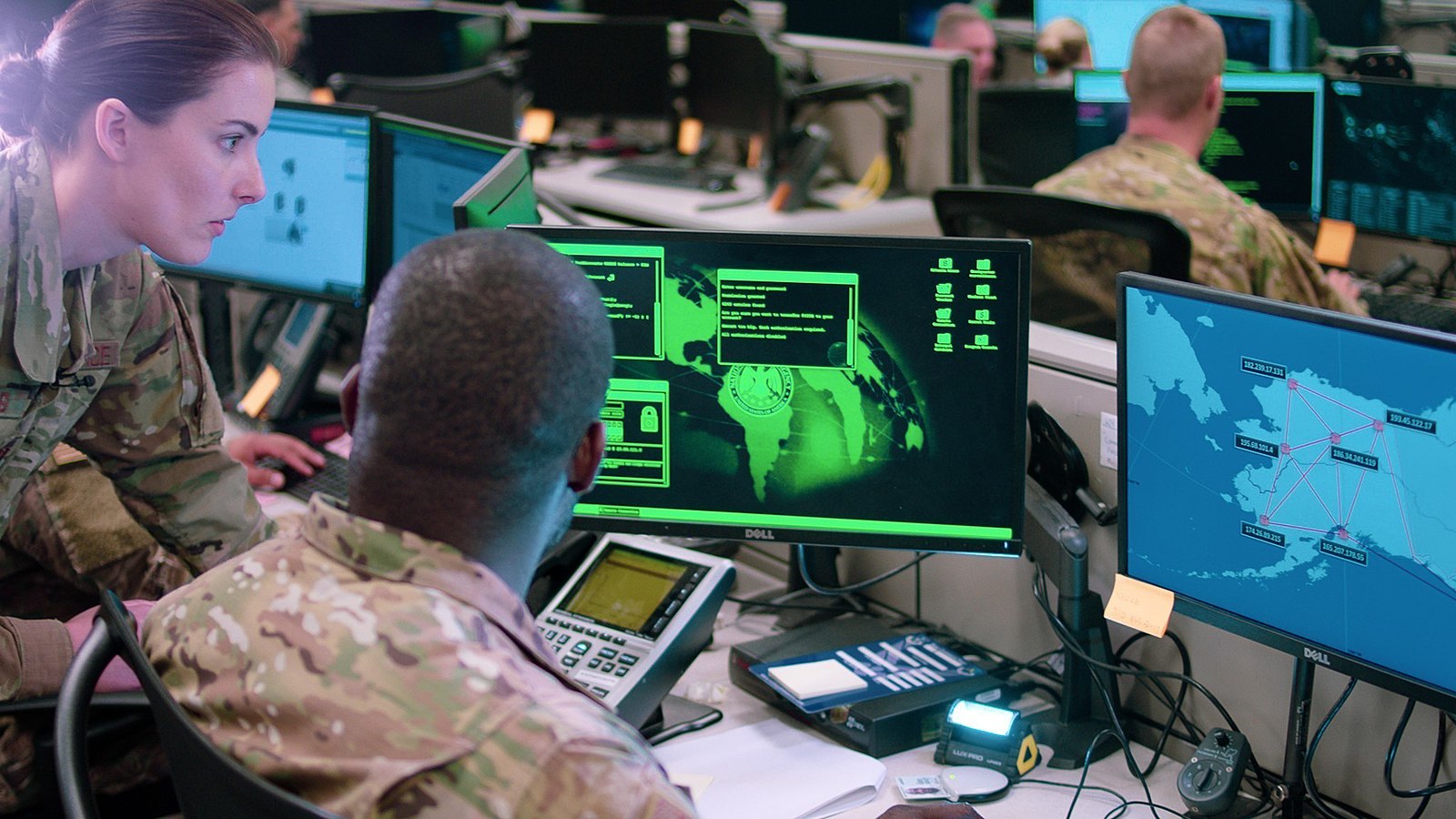House Subcommittee Examines States’ Preparedness for, Responses to the COVID-19 Outbreak
On March 10, the House Homeland Security Emergency Preparedness Subcommittee heard testimony from state health officials and private experts on states’ readiness for and responses to the COVID-19 outbreak.
Published by The Lawfare Institute
in Cooperation With

On Tuesday, March 10, the House Homeland Security Subcommittee on Emergency Preparedness, Response and Recovery heard testimony from state health officials and private experts on states’ readiness for and responses to the outbreak of the novel coronavirus and the respiratory disease it causes, COVID-19.
The hearing detailed how insufficient funding and a shortage of public health personnel have weakened state health departments’ capacity to handle crises like the one caused by the novel coronavirus. But it also spotlighted effective measures states have taken to combat the virus and allowed witnesses to suggest how Congress might ensure states are better prepared to confront future pandemics.
The subcommittee convened four individuals to testify on these and other issues: Christopher Neuwirth, the assistant commissioner for public health infrastructure, laboratories and emergency preparedness in the New Jersey Department of Health; Thomas Dobbs, a state health officer in the Mississippi Department of Health; J. Nadine Gracia, the executive vice president of Trust for America’s Health and the former deputy assistant secretary of health and human services for minority health; and Ron Klain, the former White House Ebola response coordinator.
In her opening remarks, Gracia explained that cuts to federal public health programs and state health budgets in the years preceding the coronavirus outbreak harmed states’ ability to respond. After the attacks on 9/11, the Department of Health and Human Services (HHS) created the Hospital Preparedness Program to improve hospitals’ ability to deal with large influxes of patients. Through the program’s grants, states have purchased supplies and equipment to expand their hospitals’ medical surge capacities. But since 2003, Gracia said, funding for the program has been cut nearly in half—from $515 million in fiscal year 2004 to $275.5 million in fiscal year 2020. Dobbs described the program as a “foundational element” of Mississippi’s capacity to combat infectious diseases and decried the cuts to the program’s funding.
The Public Health Emergency Preparedness Cooperative Agreement, Gracia added, has also seen its budget slashed. That initiative—which helps finance state, local and territorial public health departments—has witnessed a 20 percent decline in funding since 2010, Gracia said. And Congress has cut the CDC’s budget by 10 percent over the past decade, decreasing the amount of money the agency can provide to state and local health departments.
These funding cuts are part of a broader “boom and bust” cycle of investment during and disinvestment after public health emergencies, Klain observed. The federal government pays “attention when an outbreak or emergency occurs,” Gracia agreed, but then lapses into “complacency”—spending far less on “public health preparedness [and] infrastructure” when those emergencies pass.
Dobbs stressed that states need “steady funding” from the federal government to end “this perpetual … rollercoaster cycle.” States might even be “able to use less money if given more stably over time,” the Mississippian added—but only if they “had the flexibility to use” funding they received to fight past outbreaks to combat “the next thing.”
States’ capacity to respond to pandemics has also eroded due to a shortage of public health workers, witnesses said. That shortage stems from both a failure to recruit enough people to pursue careers in public health and a failure to retain those who decide to enter the field. Dobbs noted that he has lost almost half of his nursing staff over the past four years. While he and other state health officials have sought to hire new personnel to mitigate the overall shortage, Gracia stressed that there “is no substitute for [having] the training and experience in place ahead of time.”
States often cannot draw on their neighbors to help alleviate personnel shortages during an emergency either. Gracia noted that approximately one third of states are not party to the Nurse Licensure Compact, an agreement that allows nurses to practice in other states that signed on to the compact without obtaining additional licenses. Legislation to join the compact remains pending in 10 states, including California and Massachusetts. Six states, including New York and Connecticut, have no pending legislation to join the agreement.
As the coronavirus COVID-19 continues to spread, witnesses said that states’ greatest obstacle remains the acute shortage of test kits. Neuwirth testified that, as of March 10, New Jersey had received just two kits from the Centers for Disease Control and Prevention (CDC). Those kits can test only 432 of New Jersey’s almost 9 million residents, the assistant commissioner specified.
The test kit shortage has affected not only infected patients but also states’ ability to conduct surveillance to map the spread of COVID-19. States should have been able to conduct “aggressive” surveillance, Klain and Neuwirth said, by “going out into the community” and affirmatively testing broad swaths of the population, particularly at-risk groups such as elderly people in nursing homes. But limited testing capacity, coupled with the CDC’s strict guidelines at the start of the outbreak on whom states could test for COVID-19, hampered states’ ability to “remain ahead” of the virus, as Neuwirth put it.
States have nevertheless identified some best practices in responding to the pandemic. In New Jersey, the state health department’s proactive establishment of a central command structure to oversee the department’s response to COVID-19 has been essential to its effective handling of the outbreak, Neuwirth said.
On Jan. 27, New Jersey Health Commissioner Judith Persichilli directed Neuwirth to create a Crisis Management Team, which has coordinated the state health department’s efforts to confront COVID-19. That team, the assistant commissioner stated, gave New Jersey the ability to respond at a “moment’s notice” to the Department of Homeland Security’s notification on Sunday, Feb. 2—the day of the Super Bowl, no less—that it had designated Newark Liberty International Airport as the 11th and final airport to receive U.S. persons suspected of having been exposed to the coronavirus. Homeland Security officials informed the health department that day that the first flight carrying potentially infected persons would arrive in Newark in less than 24 hours, bearing 350 people who had been to China. It was only “because we had … a Crisis Management Team that was well organized, highly disciplined and remarkably proactive,” Neuwirth concluded, that “we were able to coordinate a measured response” to the last-minute notification.
The day after Homeland Security officials informed New Jersey that the Newark airport would receive individuals who had potentially contracted COVID-19, the state’s governor, Phil Murphy, created a Coronavirus Task Force to oversee the whole-of-state-government response and coordination between the state’s agencies. He appointed Health Commissioner Persichilli to lead it. Mississippi Governor Tate Reeves has created a similar internal command structure in the form of the Mississippi Pandemic COVID-19 Steering Committee, Dobbs said in his prepared remarks. That committee has been able to draw on the state’s influenza pandemic plan in considering how best to respond to the novel coronavirus.
Rep. Peter King asked Neuwirth to elaborate on New Jersey’s coordination with the federal government and other states, particularly King’s home state of New York. The assistant commissioner said that his Crisis Management Team has worked in “lockstep” with HHS and the CDC. This has involved “daily interactions” and “near real-time communications.”
New Jersey has also collaborated extensively with New York city and state. Neuwirth noted that the states’ proximity to one another, and that tens of thousands of people commute between them each day, has required the states to appraise each other of the steps they are taking to combat COVID-19. The long-standing partnership between the states and their “manage[ment of] risk together” has led to a “phenomenal relationship” and ensured their preparedness and response activities have been practically in “lockstep.”
While Dobbs did not discuss the value of interstate collaboration in combating COVID-19, he did confirm that his department has coordinated extensively with the CDC and found its guidance to be “excellent.” He qualified, however, that he found the CDC’s website “cumbersome” and planned to bring that up with the agency.
Dobbs also highlighted the importance of harnessing technological innovation to confront COVID-19. Mississippi recently invested in “artificial intelligence business analytics” to monitor outbreaks in the state, the health officer said. And throughout the hearing, Dobbs stressed the importance of the state’s “telehealth” capacity, which helps contain the spread of highly transmissible diseases by allowing state residents to speak with doctors or medical personnel by phone and enables the remote monitoring of patients.
“If you think about who’s at risk of bad outcomes from COVID-19,” Dobbs said, “it’s going to be older folks primarily. People with chronic medical conditions. And these are people who are going to access the health care system quite frequently ....” Barring instances in which at-risk people need urgent medical care, Dobbs continued, ensuring such persons stay away from hospitals and clinics where they face the greatest chance of exposure to the coronavirus will help limit the spread of the virus to those groups.
Gracia stressed the need for Congress to prioritize funding for data modernization. Many state health departments, she said, rely “on 20th century modes of tracking diseases, such as paper, fax and telephone.” This hampers their ability to trace and map the spread of a highly transmissible virus.
Both Gracia and Klain agreed, however, that Congress’s highest priority now should be ensuring that federal agencies quickly implement the emergency $8.3 billion emergency funding package it passed on March 5. “Passing a funding bill is only the first step, not the last,” Klain said in his opening remarks. Congress should urge the president’s coronavirus task force to “report regularly to the American people on the pace and deployment of the funding Congress provided.” Gracia added that any delay in distributing “funds to states and other partners … could cost more lives.”
Though lawmakers and witnesses agreed that states must be better prepared to confront future pandemics, they disagreed at times over how to achieve this. Witnesses repeatedly stressed the need for higher levels of funding to support state and local health departments. “Stable support over time will permit us to remain in a perpetual state of readiness,” Dobbs contended, “rather than diverting essential resources away from other public health issues when we must rapidly” respond to a crisis. Rep. Dan Crenshaw, however, doubted the wisdom of increasing the federal government’s support for state public health infrastructure and preparedness. “Of course we could quadruple your funding and you’d be more and more prepared. And you’ll come back next time and ask for even more money,” he told Neuwirth.
Dobbs sought greater flexibility in what states can do with the funding they receive. Too often, he said, the federal government appropriates money for a “specific disease event,” such as the Ebola crisis or the Zika virus, and prohibits states from tapping into any leftover funds when the next outbreak arises. Witnesses also stated that Congress could help states expand their public health workforce and retain the personnel who enter the field through workforce training, loan repayment and other incentives.
While COVID-19 presents a formidable public health challenge, witnesses encouraged Congress to see the outbreak as an opportunity to address, in Klain’s words, the “longstanding issues of pandemic preparedness that remain.” Fortunately, the former Obama administration official continued, Congress has a “raft of bipartisan proposals sitting on shelves that [it] has never acted on.” The blueprint for the body’s work to improve state and federal responses to infectious disease outbreaks is there. “Let this be a reminder of the need to act on that.”





